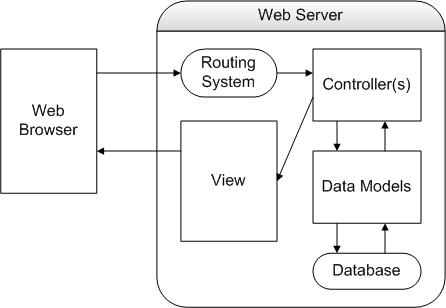IT 432
Spring 2025
Craig Miller
Weekly Notes
Assignments
- Assignment 1
- Assignment 2
- Assignment 3
- Assignment 4
- Midterm Report
- Assignment 5
- Assignment 6
- Culminating Project
- Final Report
A web application dynamically creates HTML pages using content from a database. It also serves forms that allow users to update content in the database.
A web framework (e.g. Rails, Flask) provides a lot of starter code to make the development of a web application much easier. Traditional web frameworks use the MVC (Model, View, Controller) architecture:
Many frameworks have a separate routing system, which handles a request from the web browser and directs it to the right controller.
The diagram below depicts how the traditional MVC components work together.
